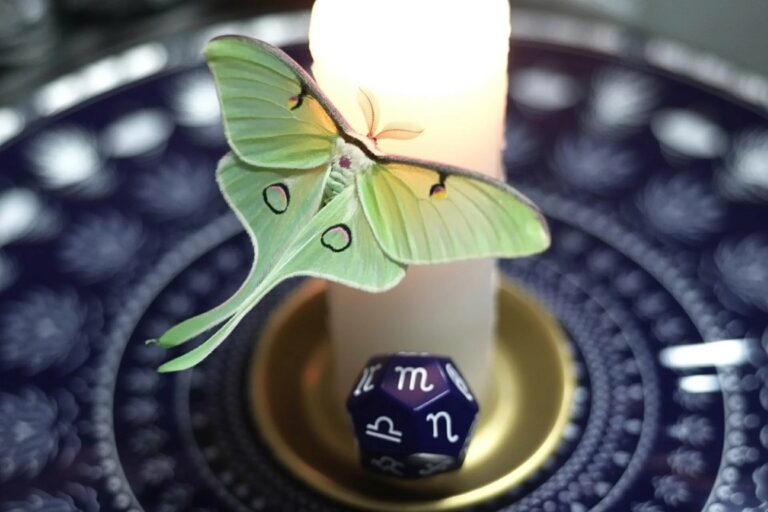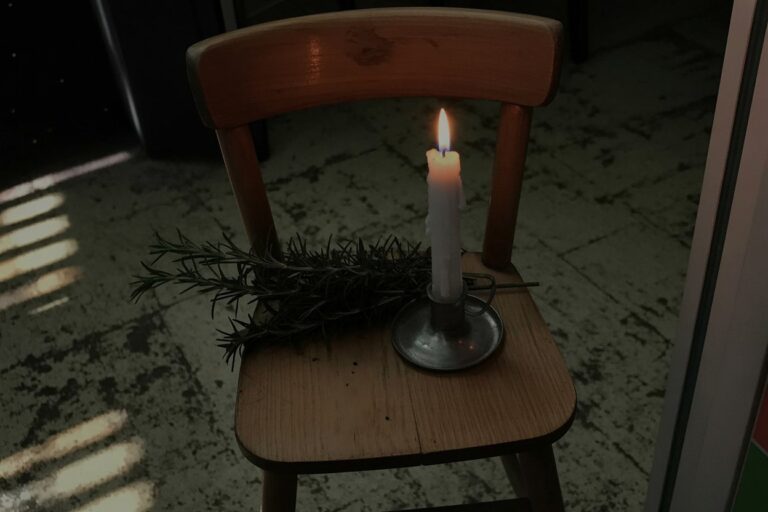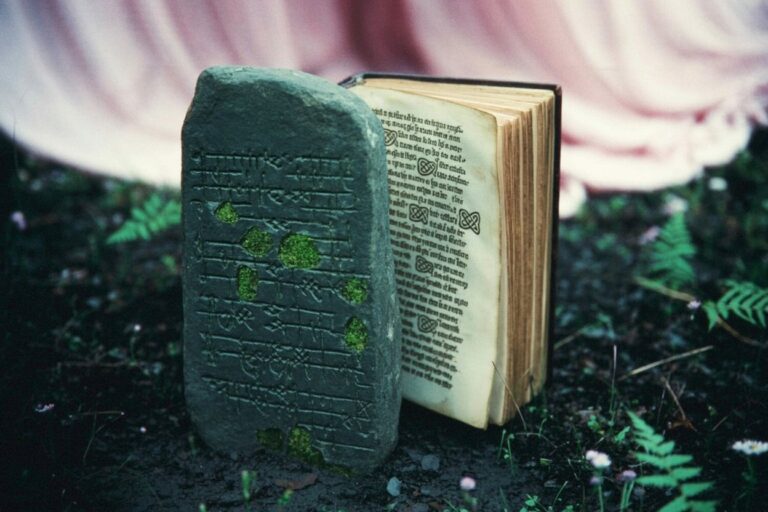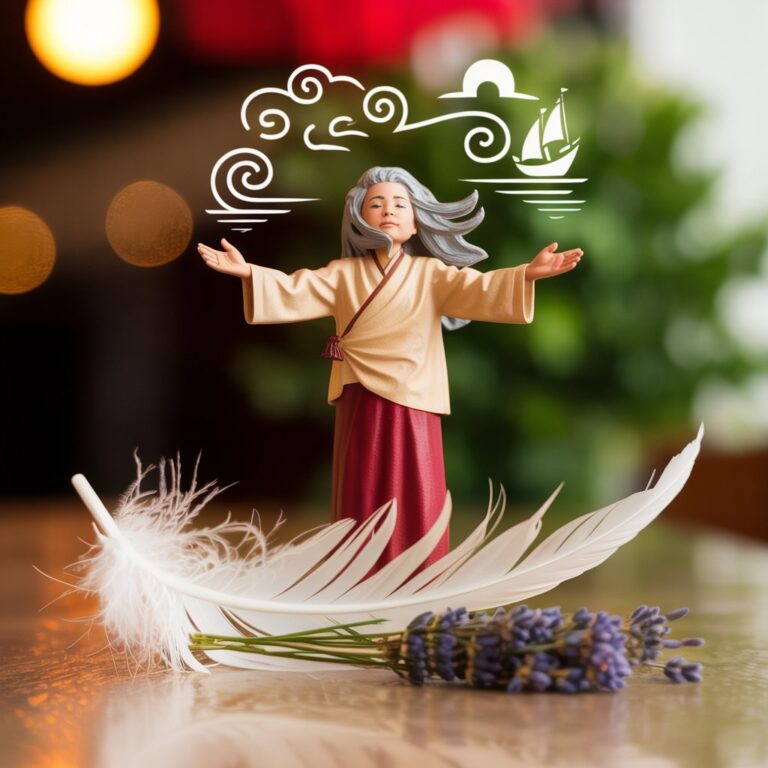What Is a Cauldron in Witchcraft? A Beginner’s Guide
Please note that posts on this site may contain affiliate links
The cauldron sits in the warm glow of firelight, its rounded form collecting shadows while herbs simmer within. As steam rises with purpose, it carries both fragrant botanicals and magical intention upward. While this iconic image appears frequently in popular culture, the cauldron holds genuine significance beyond mere decoration. For centuries, witches have valued this versatile tool for its practical applications in transformation rituals, spell crafting, and symbolic representation of the creative void where magic begins.
- The Cauldron: More Than Just a Pot
- Sacred Wellsprings: Cerridwen and Her Cauldron of Transformation
- Your First Cauldron Journey: Materials, Sizes, and Choosing Wisely
- Practical Uses in Modern Witchcraft
- The Deep History: From Kitchen Staple to Magical Icon
- Cauldrons Beyond Witchcraft
- Caring for Your Cauldron
- Safety and Substitutions
- Myths & Magic: What Cauldrons Mean to Modern Witches
- Using Your Cauldron in Real Life
- Beltane Feast Recipes
The Cauldron: More Than Just a Pot
A cauldron, at its simplest, is a round pot with a sturdy handle and sometimes three legs. But hold one in your hands, feel its weight in your palms, and you’ll sense there’s nothing simple about it. In witchcraft, a cauldron becomes a vessel of transformation, the sacred womb where new beginnings take shape and ordinary ingredients become extraordinary.
This symbolism runs deep. When you look into a cauldron’s empty belly, you’re gazing into a space where cycles happen: creation, dissolution, rebirth. Like the moon above, the cauldron’s round form speaks to these eternal rhythms. Its capacity to hold and transform echoes the natural cycles that shape our lives, seasonal changes, moons growing fuller and becoming slender, endings flowing into beginnings again.
The cauldron whispers to us about the creative, nurturing aspects of feminine divine energy, about the mysteries of birth and rebirth that begin in darkness before emerging into light. You’ll find these themes woven through magical systems worldwide, making the cauldron not just a tool but a living symbol of magic’s transformative power. For those seeking deeper understanding, there’s a fascinating journey through cauldron history worth taking.
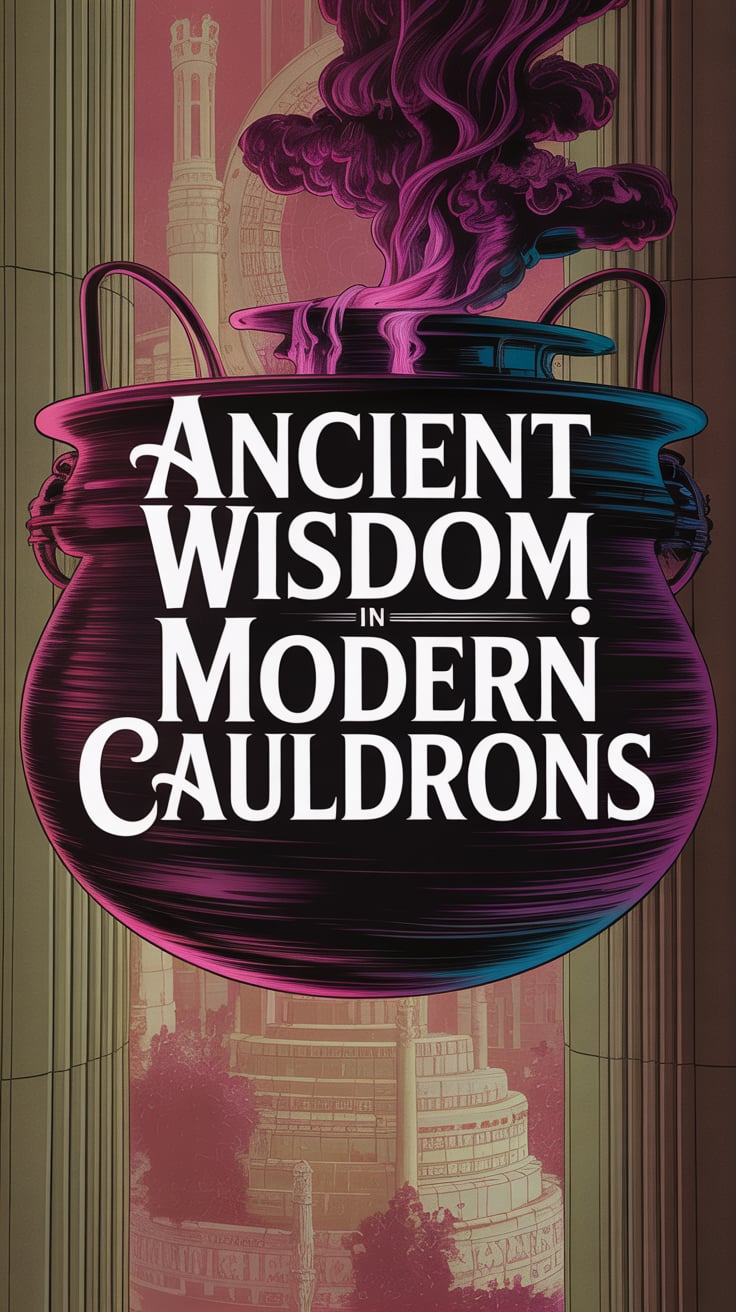
Sacred Wellsprings: Cerridwen and Her Cauldron of Transformation
Sit quietly for a moment and visualize this scene: a Welsh sorceress tends her cauldron with unwavering focus for a year and a day, stirring potions that bubble with promises of insight and creativity. This is Cerridwen, whose vessel, the Cauldron of Awen, stands at the heart of one of witchcraft’s most illuminating tales.
The story unfolds with remarkable twists. Young Gwion Bach, assigned simply to tend the fire beneath this powerful brew, accidentally tastes three drops of the potion when they splash onto his finger. In that instant, the wisdom Cerridwen had prepared for another flows into him.
What follows is a magnificent chase of transformations: Cerridwen pursues Gwion as they both shift through forms, from hare to hound, fish to otter, bird to hawk. The pursuit concludes when Gwion hides as a grain of wheat, only for Cerridwen to transform into a hen and swallow him whole.
Nine months later, she gives birth to Taliesin, who would become Wales’ greatest poetic voice.
This colorful narrative maps the spiritual territory of the cauldron perfectly. Within Cerridwen’s vessel simmers the potential for profound transformation that can be both challenging and revelatory. The wisdom gained comes through complete immersion in life’s deeper waters. Her cauldron teaches you that genuine knowledge often arrives unexpectedly, that true transformation requires genuine sacrifice, and that what emerges from this process may bear little resemblance to what entered it.
For modern witches practicing today, Cerridwen’s cauldron represents the personal crucible where intention meets action, where ordinary awareness dissolves into something more expansive and profound. If you wish to understand how this ancient story continues to shape contemporary magical practice, Cerridwen’s timeless wisdom offers valuable insights into your own transformative journey.
Your First Cauldron Journey: Materials, Sizes, and Choosing Wisely
Walking into a metaphysical shop (or a treasure-filled thrift store!), you’ll notice cauldrons of various types beckoning to you. This variety might seem overwhelming at first, as each material carries its own unique energy, benefits, and limitations. Let’s explore your options:
- Cast Iron: These traditional cauldrons connect you to centuries of magical practice through their substantial weight and presence. The iron retains heat beautifully, making it ideal for burning herbs or heating over flame. Run your fingers across the surface to feel its stability and grounding energy. Cast iron requires regular care to prevent rust, but many witches find this maintenance creates a deeper connection with their tool. For those seeking a sturdy, traditional option for burning herbs, incense, or ritual work, a classic design with a handle serves both beginners and experienced practitioners well.
- Brass or Copper: Lighter than cast iron, these metals capture and reflect light in warm, inviting tones that transform your altar space. As they age, they develop unique patinas that chronicle your magical journey. Choose these materials if you feel drawn to their solar and Venusian energies, or when you need something more portable than iron.
- Ceramic: Often adorned with symbols or painted in colors that strengthen specific magical intentions, ceramic cauldrons bring an artistic dimension to your practice. Their lightweight nature makes them perfect for holding water, herbs, or crystals, though they should remain away from direct flame.
- Stainless Steel: The contemporary choice offering cleanliness, durability, and freedom from maintenance concerns. No special seasoning required, no worries about rust or reactivity. While some traditionalists suggest they lack the “soul” of other materials, many practitioners value their practical benefits.
Size matters in a different way than you might expect. While popular imagination might conjure massive bubbling pots, most practicing witches work with much smaller vessels:
- Tiny cauldrons (1-3 inches) excel at burning small amounts of herbs, holding salt or water for quick spellwork, and serving as focal points for meditation. Their portability makes them perfect for travel altars and discreet practice.
- Small to medium cauldrons (4-10 inches) handle most personal spellwork needs.
- Large cauldrons (11+ inches) serve group rituals or outdoor ceremonies.
The right size depends on your practice, your space, and what feels comfortable in your hands. Your cauldron should feel like a natural extension of your intentions, not an awkward presence on your altar.
For hands-on wisdom about selecting and caring for your magical vessel, this conversation about cauldron applications in witchcraft offers practical insights that will enhance your selection process.
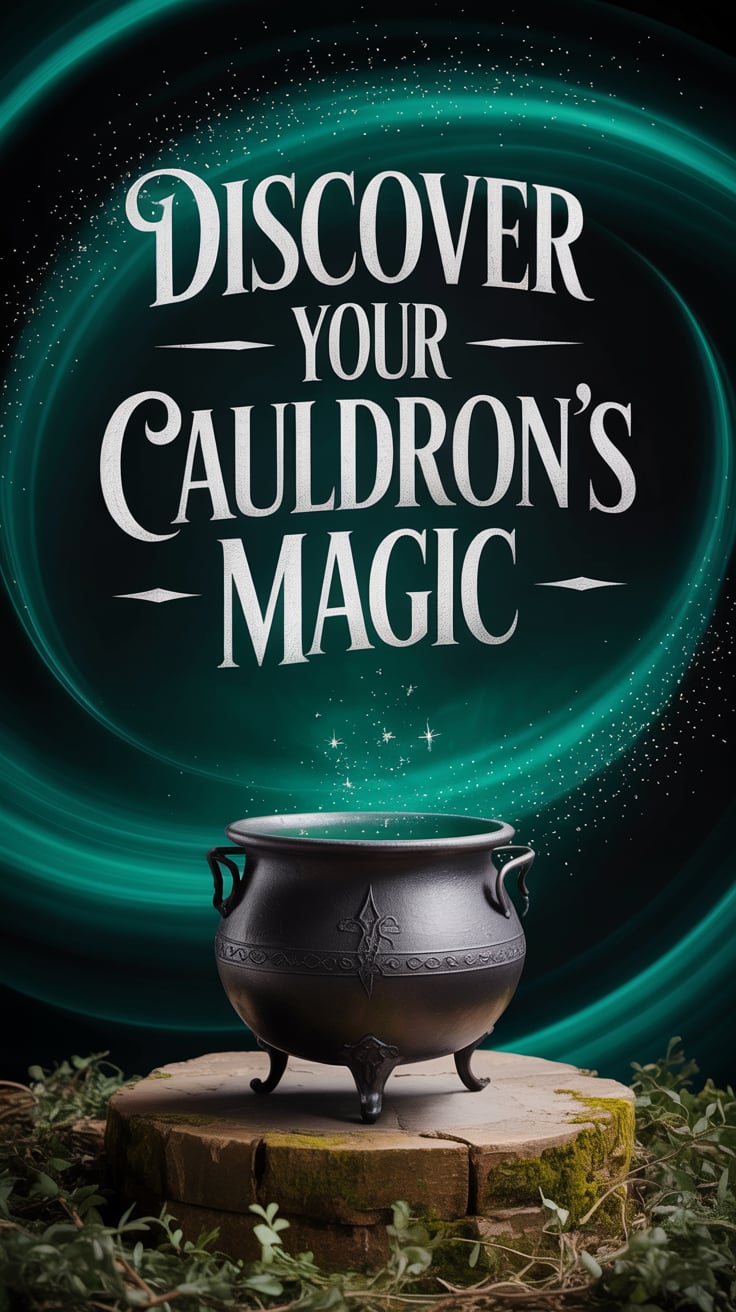
Practical Uses in Modern Witchcraft
Burning and Transformative Work
The flames flicker inside your cauldron, curling the edges of the paper where you’ve written what you need to release. This is one of the cauldron’s most powerful functions, creating sacred space for transformation through fire.
In burning rituals, your cauldron becomes the container for powerful change. Write down what you want to release, whether a habit, a relationship, or a limiting belief, and burn it with cleansing herbs like rosemary or bay leaf. As smoke rises, visualize that energy dissolving, returning to the universe in a form that can no longer affect you.
Always place your cauldron on a heatproof surface when working with fire. Some practitioners elevate their cauldrons with a trivet or stones for added protection. The container aspect is crucial here, the cauldron holds and directs the transformative energy rather than letting it scatter. Review fire safety guidance before beginning this kind of work, especially if you’re new to flame-based magic.
Water Magic and Scrying
Fill your cauldron with water until the surface becomes a perfect black mirror. Now sit quietly, allowing your gaze to soften as you look into the depths. This is scrying, the ancient practice of gaining insight by gazing into reflective surfaces.
For best results, use a dark-colored cauldron or add a few drops of food coloring or ink to darken the water. This darkness creates the contrast necessary for your mind to perceive meaningful patterns emerging from your subconscious, much like watching clouds form shapes in the sky. The ancient art of water divination connects you to a tradition practiced across countless cultures throughout history.
Beyond scrying, your cauldron becomes a vessel for charged waters. Many practitioners collect water during the full moon, allowing silver moonlight to infuse it with potent energy. This lunar-charged liquid serves as a versatile magical ingredient with countless practical applications, from cleansing crystals to nourishing plants intended for magical use, or adding subtle power to your spellwork.
The cauldron’s circular form naturally amplifies water’s receptive qualities. As the water grows still, it transforms into a conduit between worlds, the visible and invisible, conscious and subconscious. This liminal quality creates a perfect space for revelation and insight. For those seeking to deepen their practice, various traditional techniques have been preserved through generations, offering structured approaches to this intuitive art.
Altar Focal Point and Sacred Symbol
When quietly resting on your altar, your cauldron creates a powerful focal point that naturally draws the eye. Its curved form silently speaks of transformation and feminine wisdom. Many witches enhance their altar arrangements by storing herbs and crystals for cauldron work in beautiful glass containers that combine practical storage with visual harmony.
The changing seasons inspire different ways to fill your cauldron. Winter calls for pine cones and fragrant evergreens, spring welcomes delicate wildflowers, and autumn invites freshly gathered herbs. Your cauldron can also hold offerings or represent specific elements through its contents:
- Earth: Fill with salt, stones, or soil
- Water: Fill with water (possibly charged under the moon)
- Fire: Hold a small candle or burning herbs
- Air: Leave empty or fill with feathers
Your cauldron stands apart from other magical tools in its remarkable adaptability. It flows between roles with graceful ease, supporting whatever aspect of your practice needs attention. When you touch its smooth surface, you connect with centuries of magical tradition, creating an invisible thread between your modern practice and the ancient ways.
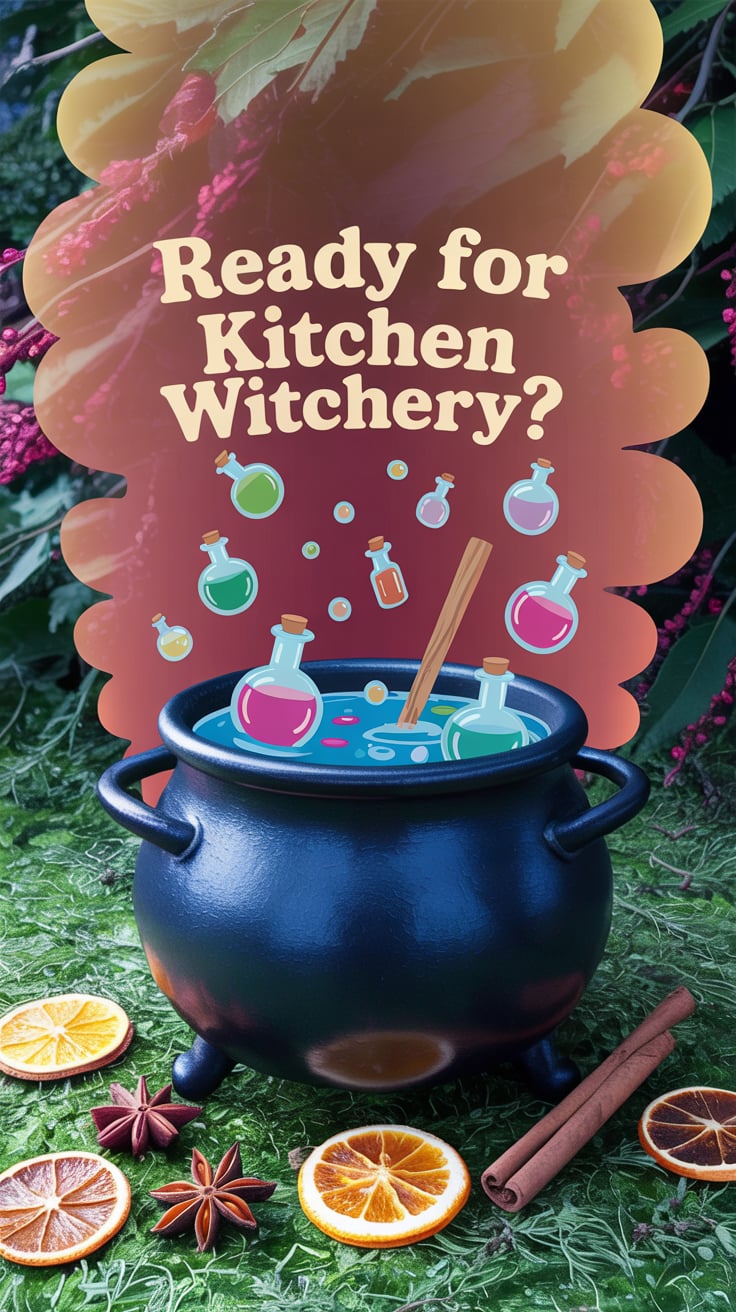
The Deep History: From Kitchen Staple to Magical Icon
Long before electric lights brightened our homes or gas flames warmed our meals, cauldrons resided in hearths across Europe. In medieval households, cauldrons weren’t mystical objects but essential tools for daily life. Families prepared their daily sustenance in them, crafted healing brews and potions, transformed fabrics with vibrant colors, and created cleansing soaps. The cauldron’s power came not from rarity but from its role in sustaining life itself.
Trace your fingers across the word’s origins: “cauldron” flows from the Latin “caldarium” meaning “hot bath,” arriving in English through Norman French. This etymology unveils its fundamental purpose, a vessel designed for heating various materials.
Yet beneath these practical uses, something profound stirred. Archaeological discoveries have revealed ancient cauldrons intentionally placed in sacred waterways, boggy waters, and other liminal spaces. These ritualistic offerings suggest cauldrons held spiritual significance long before witch trials began. The magnificent Gundestrup Cauldron, crafted from silver during the 1st century BCE, portrays scenes of deities and sacrifice, clearly marking it as an object of ceremony rather than simple cookery.
The remarkable Battersea Cauldron, dating to the Late Bronze Age (around 800-700 BCE), further confirms the cauldron’s dual identity as both practical tool and sacred vessel. Its existence reminds us that the separation between everyday objects and magical implements is largely a modern construct. Our ancestors recognized the sacred potential within their daily tools.
When witch hunts spread through Europe, ordinary women’s household activities became suspect. The cauldron, once representing nourishment and home, transformed in collective imagination into something ominous. Shakespeare captured this cultural shift in Macbeth, through his memorable scene of witches incanting “Double, double toil and trouble, Fire burn, and cauldron bubble!” This artistic portrayal permanently sealed the cauldron’s association with witchcraft in Western consciousness.
Cauldrons Beyond Witchcraft
The morning sun sparkles across the dew as you position your cast iron cauldron over a crackling campfire. Today, this vessel serves a practical purpose, simmering a hearty stew that will develop rich flavors throughout the afternoon. This seamless transition between magical and mundane uses connects you to countless generations who saw no division between practical skills and magical applications. For those drawn to kitchen witchcraft or interested in blending culinary traditions with magical practice, creating a dedicated journal for your cauldron recipes offers a beautiful way to document both your spellwork and your cooking adventures.
Beyond magical applications, cauldrons continue to serve valuable practical functions in everyday life. In outdoor cooking scenarios, cast iron’s exceptional heat distribution and remarkable durability make it unmatched for open-flame cooking. Historical enthusiasts and camping aficionados value these vessels for authentic cooking experiences that connect them to traditional methods. In South African cuisine, the traditional “potjie” (essentially a three-legged cauldron) creates distinctive slow-cooked stews with layered flavors impossible to achieve with modern cookware.
Throughout history, cauldrons functioned as versatile household tools central to daily life. Brewers fermented ales and meads in them, fabric artisans transformed plain textiles by immersing them in pigment-rich baths, and soapmakers combined carefully measured fats and lye to produce essential cleaning products. These historical applications remind us how the boundaries between practical crafts and magical practices often blurred or simply didn’t exist in many cultures.
Historical cooking techniques using cauldrons reveal fascinating ingenuity. Cooks steamed puddings by suspending cloth-wrapped mixtures in boiling water, creating light, moist desserts. They invented early oven-like environments by placing earthenware containers of food into cauldrons surrounded by hot coals, controlling temperature through careful coal placement. These clever traditional cooking methods showcase human creativity working with simple tools to overcome limitations.
Recognizing these mundane applications adds meaningful depth to your magical practice. Your cauldron serves as a tangible link not only to magical traditions but to the full spectrum of human innovation, creativity, and survival skills throughout history.
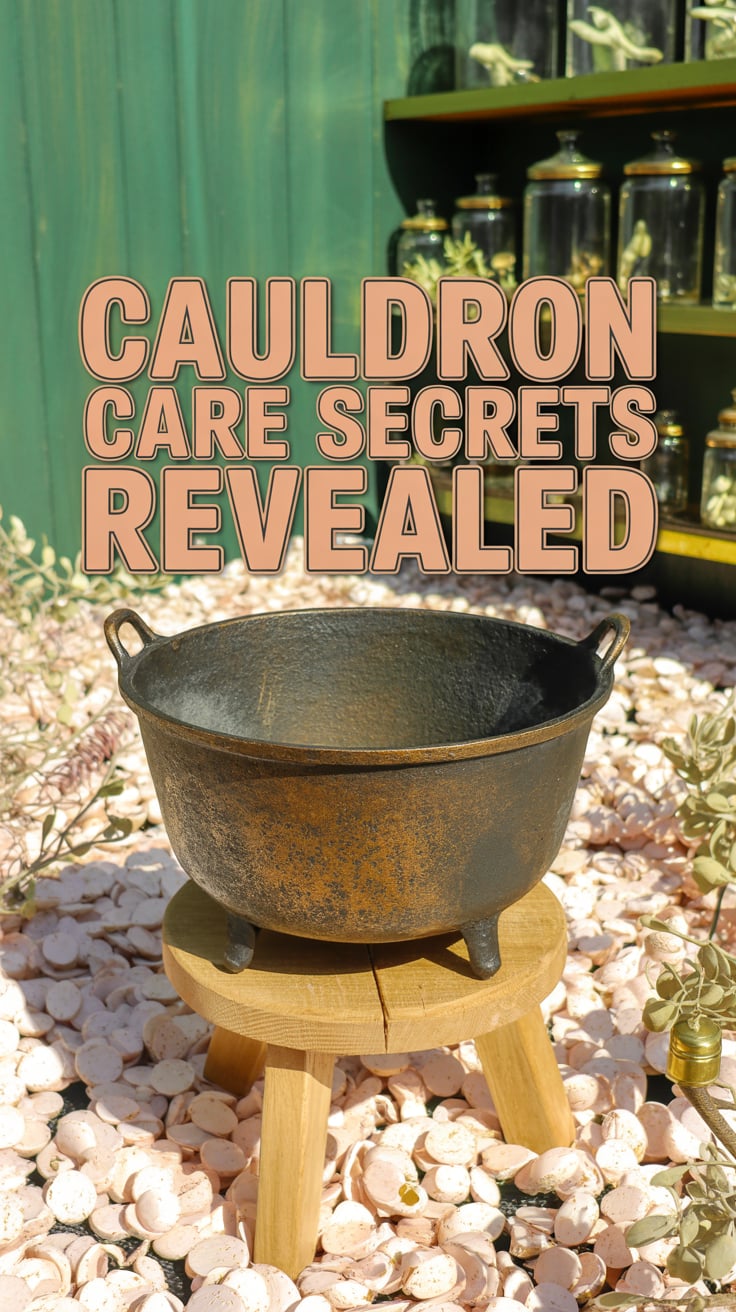
Caring for Your Cauldron
Cast Iron
Touch a well-seasoned cast iron cauldron and notice the smooth, almost silky texture beneath your fingertips. This seasoning, a layer of polymerized oil bonded to the metal, develops through intentional care and attention. With proper maintenance, your cauldron becomes a tool that actually improves with each use.
To season a new cast iron cauldron, first wash it with hot water (avoid soap), dry it thoroughly, then apply a thin coat of vegetable oil or shortening to all surfaces. Place it in an oven preheated to 450-500°F for one hour. This high temperature transforms the oil into a protective coating that prevents rust and creates a natural non-stick surface. While some guides suggest lower temperatures around 375°F, experienced practitioners find the higher range creates a more durable finish through complete polymerization.
After each use, clean your cauldron with hot water and a stiff brush, avoiding soap whenever possible as it strips away the valuable seasoning. For stubborn residue, try scrubbing with coarse salt as a gentle abrasive. Always dry your cauldron completely to prevent rust, and apply a light coating of oil before storing for extended periods. These techniques reflect generations of practical knowledge about maintaining iron cookware for both mundane and magical purposes.
Brass and Copper
Brass and copper cauldrons tell a story through their changing surfaces. As you work with them, they develop beautiful patinas that document your magical journey. Many witches value this natural aging process, seeing the shifting colors and textures as a visual record of their practice. Others prefer to maintain the original brilliance of their tools.
When you want to restore the shine to your metal cauldron, try this simple cleaning mixture from your kitchen: combine equal parts salt, flour, and vinegar until they form a thick, spreadable paste. Apply this to your cauldron’s surface, allow it to sit briefly, then rinse thoroughly and dry with a soft cloth. This gentle cleaning method preserves your tools without harsh chemicals. For another approach, the combination of lemon juice and baking soda works wonderfully to bring back the luster while honoring both your cauldron and the environment.
Safety and Substitutions
Imagine soft candlelight flickering across your apartment living room as you consider your magical practice. Your building prohibits open flames, and storage space comes at a premium. This raises an important question: is a cauldron truly necessary for your craft?
Experienced witches understand a fundamental truth: witchcraft requires intention, not specific tools. Many practitioners in urban settings, apartments, or dormitories practice without cauldrons. Fire regulations, spatial constraints, or budget considerations often make traditional cauldrons impractical for modern witches.
Consider these creative alternatives:
- A sturdy cooking pot performs many of the same functions
- Heat-resistant ceramic bowls work beautifully for burning small herbs or papers
- A simple deep dish or plate holds water perfectly for scrying
- Natural items like large seashells become wonderful vessels for small amounts of water or salt
Think of it this way: what really matters in witchcraft is your personal intention and focus, not whether you have the fanciest or most traditional tools. Your magical container (whether it’s a cauldron or something else) is simply there to help you express your intentions. This is especially helpful to remember if you’re on a budget, living in a small space, or just starting out in your practice. You don’t need to wait for the “perfect” cauldron to begin your magical journey – work with what you have, and your practice will naturally evolve over time.
For those drawn to vintage cauldrons with their rich historical energy, proceed with awareness. Older pots manufactured before the 1970s may contain lead or other potentially harmful metals. Never use untested antique cauldrons for preparing anything you plan to consume.
For purely magical purposes where consumption isn’t involved, antique vessels can become powerful allies, carrying the energy and wisdom of previous generations. However, remain mindful of potential hazards with older cookware and the possible presence of lead in antique items.

Myths & Magic: What Cauldrons Mean to Modern Witches
Sit in a circle with other witches talking about their craft, and you’ll quickly notice how the cauldron comes up again and again. Beyond just being a pot you use for spells, cauldrons carry deeper meanings that still matter to witches today.
In Wiccan practice, cauldrons often stand for the Goddess and her creative power. They remind us of the womb, of making new things, and of how life moves in cycles. When you work with a cauldron, you’re tapping into that ancient symbol of birth, death, and rebirth.
Cauldrons have always brought people together. Think about it – in old villages, a big pot might feed many families, creating bonds through shared meals. In modern covens or witch groups, gathering around a cauldron for spells can strengthen those connections through shared intentions.
Many witches who practice alone create their own special traditions with their cauldrons. Some clean them thoroughly at certain moon phases, others use them only for specific spells, and some develop unique relationships with gods or spirits connected to change and inner wisdom. These personal touches turn a simple pot into something much more meaningful in your magical journey.
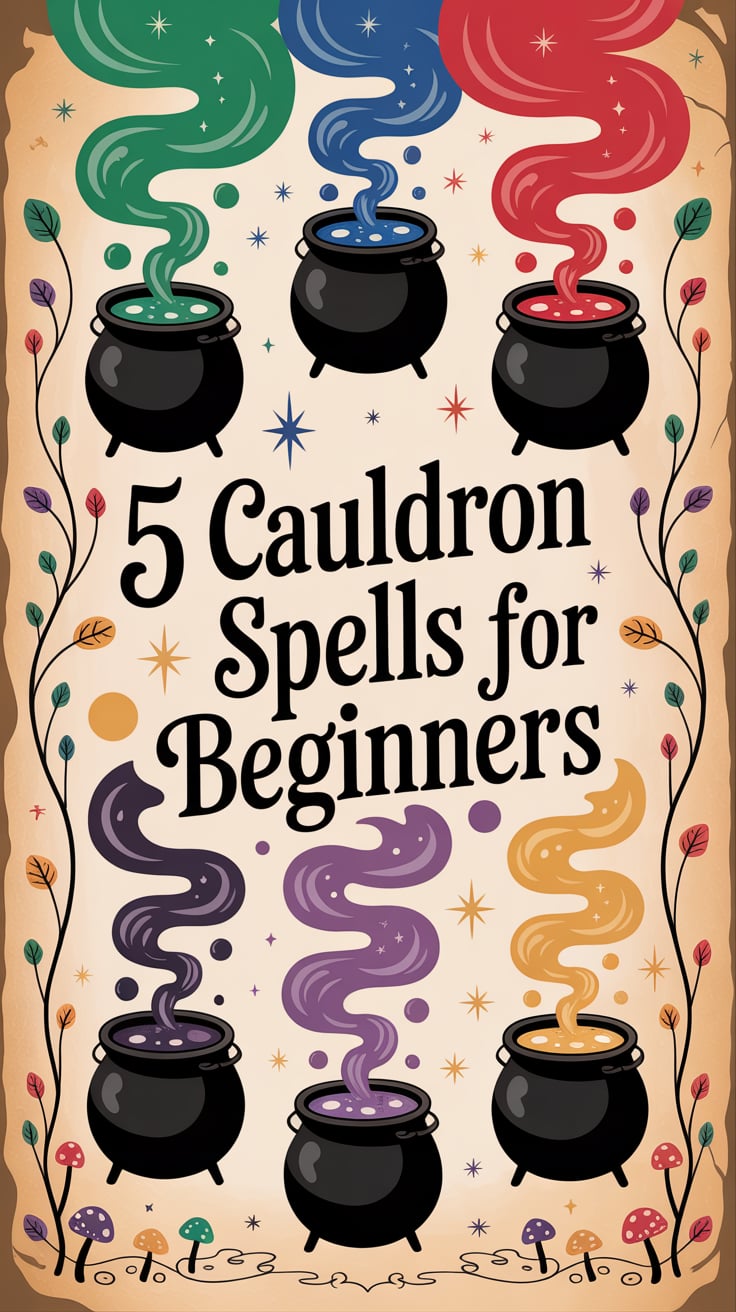
Using Your Cauldron in Real Life
So you’ve learned about cauldrons, their history, and what they symbolize. Now let’s get practical about how this tool fits into your actual witchcraft practice.
The beauty of a cauldron is that there’s no right or wrong way to use it. If you’re drawn to a small brass one for your altar, start there. If you want a big cast iron pot for outdoor fire rituals, follow that instinct. Let your relationship with your cauldron develop naturally over time.
Unlike other witch tools with specific purposes, a cauldron grows with you. As a beginner, you might just use it to hold crystals or salt. Later, that same cauldron could become central to bigger spells or group rituals.
Keep track of what you do with your cauldron. Write down the spells you perform, seasonal celebrations, or insights from scrying. This creates a personal record of your journey with this tool. A simple notebook works perfectly for this.
What makes cauldrons special is how they bridge the gap between everyday life and magic. Cook dinner in your cauldron before using it in a spell, and you connect these two important parts of life. I love this kind of practical magic that doesn’t require separating the magical from the mundane.
Using a cauldron connects you to countless individuals throughout history and across cultures who recognized its significance. Far beyond a simple cooking vessel, the cauldron has stood as a powerful symbol of transformation, creation, and renewal for generations of practitioners before us.



